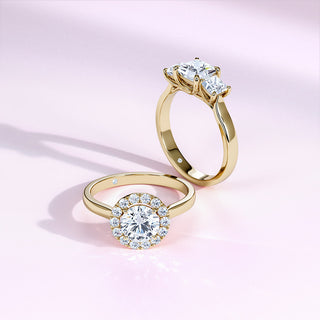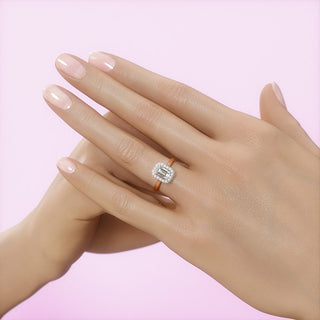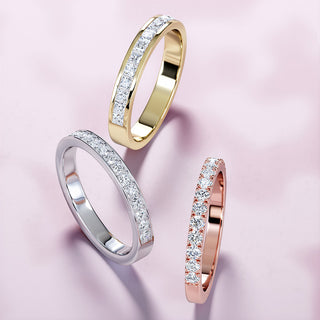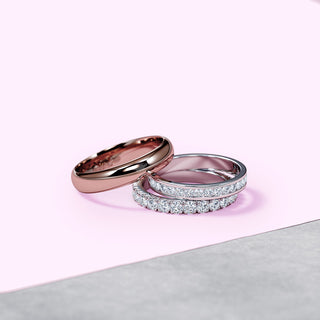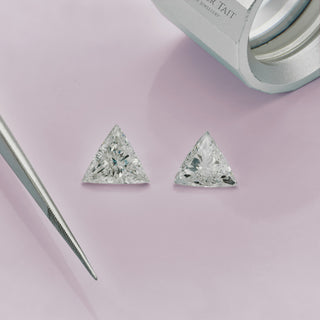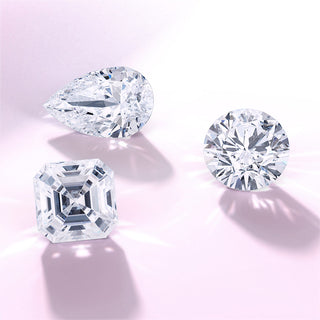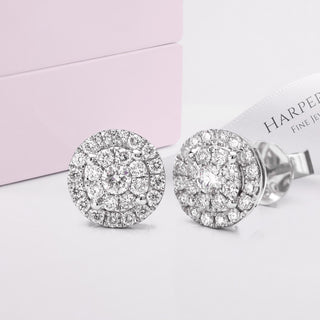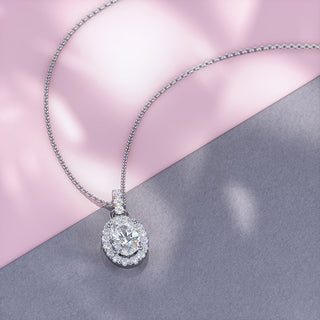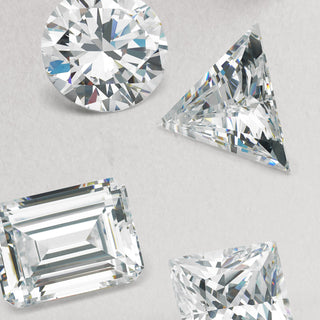What is a Pear Diamond?
A pear cut diamond is immediately recognisable, with a distinct pear, or teardrop, shape. Designed in the 15th century, a pear diamond combines the elegant point of the marquise cut and the inviting curves of a round or oval. Like a round diamond, a pear diamond is brilliant cut, offering beautiful sparkle and fire.

How Many Facets does a Pear Diamond have?
A pear diamond has 58 facets, cut in a brilliant cut style.
What Makes a Pear Diamond Special?
The pear diamond has become synonymous with luxury, thanks to its distinctive cut, exquisite sparkle…. and Elizabeth Taylor! Brilliant cut facets give the pear incredible fire and scintillation, while the teardrop shape is effortlessly graceful. The beautiful, sweeping curves suit engagement rings and fine jewellery
How do you Know if a Pear Diamond is Well Cut?
Of the four Cs, diamond cut is one of the most important. Pear diamonds are fancy shapes, so are not given a defined cut grading as round diamonds are.
It’s left to diamond experts to determine what makes a pear diamond beautiful, based on a balance of factors; the symmetry of the facets, the quality of the polishing, and the balance of size and depth.

First we consider the visual impact of the stone - how does the fire, brightness, and scintillation appear? Second, the design - how well proportioned is the diamond? Finally, we look at the craftsmanship - how skillfully has the diamond been cut and polished? While heart diamonds are not given a formal cut grading, there are some suggested parameters to consider for a well-cut stone, including;
Length to width ratio: the length to width ratio of a diamond measures how proportional it is. Diamonds which fall within these parameters will be most pleasing to the eye, with a more distinct and even shape. Look for a pear diamond with a length to width ratio of 1.45-1.55, letting personal preference dictate whether you choose a narrower or wider stone.
Table: the table is the largest, central facet of a stone. The table needs to be large enough to let lots of light into the diamond, but not so large that the upper facets don’t have room to sparkle. Look for a pear diamond with a table ratio between 50 - 60%
Depth: a diamond’s depth is the top-to-bottom measurement of a diamond, from its table to culet. The depth ratio compares this measurement with the overall width of the stone. The depth affects the visual balance of a diamond and its brilliance. If a stone is too shallow or deep the light will not refract properly, escaping through the base of the diamond instead of the top. Look for a pear diamond with a depth ratio between 58 - 68%.
Choosing a Diamond Cut Grade
Cut quality in Pear diamonds is more difficult to assess than round brilliant cuts as laboratories do not assign a cut grade for fancy cut diamonds. However there are parameters that make it easier to choose a dazzling and exquisite pear cut. Look for a length to width ratio of 1.45 to 1.55.
Choosing a Pear Diamond Colour
Like so much about choosing a diamond, colour grade comes down to personal preference. Colour is graded by letters, with the scale starting at D. A colourless diamond grade is anything from grades D to F.
Most diamond lovers prefer the cool, white hue of a ‘colourless’ diamond, which is why these shades are so highly prized. For grades G and below the diamond colour gets progressively warmer, beginning to draw tones of yellow or brown. Some customers like these warmer shades, or find they can’t easily tell the difference in a yellow or rose gold ring.
If you have chosen a platinum or white gold setting, the difference between the white metal and a warmer colour stone will be more obvious, so we advise going no lower than a grade F.
Choosing the Clarity of a Pear Diamond
Diamond clarity varies greatly, from perfectly clean stones to those with easily visible inclusions. Truly flawless diamonds are incredibly rare. Thanks to the dizzying sparkle of a pear diamond, small inclusions are not as visible to the naked eye. It means you can choose a slightly included grade and still enjoy an eye-clean diamond. Which is to say, you will not notice any flaws without magnification.
We advise a grade between SI1 and VS2 for brilliant cut stones under 3.00ct. At these grades you will not notice any inclusions - only incredible sparkle! For very large stones, a higher clarity may be advised. Please contact us and we can talk through your options.
Is a Pear Cut the Diamond for You?
If you adore the matchless sparkle of a round brilliant cut diamond but long for something a little out of the ordinary, you’ll love the pear cut. Set in a solitaire mount, this distinctive cut speaks for itself. In a diamond detail or halo design, a pear diamond exudes glamour. Style a pear cut diamond your way, choosing to wear it with the point facing up or down.


